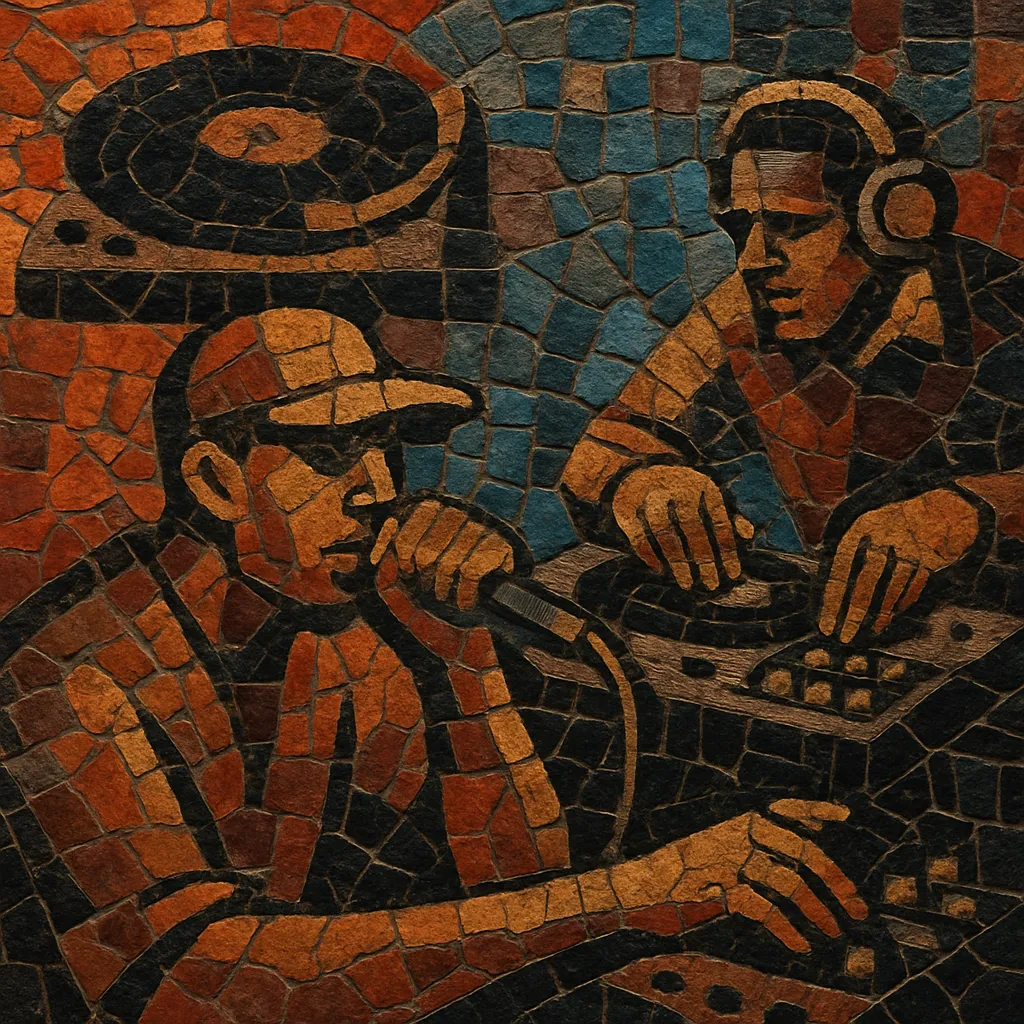Boom bap is a foundational East Coast hip hop style defined by hard, punchy drums—“boom” for the kick and “bap” for the snare—laid under sample-based loops from jazz, soul, and funk records.
It typically runs around 85–96 BPM, favors gritty, minimally processed textures (often associated with SP‑1200 and early Akai MPC samplers), and foregrounds lyrical skill: multisyllabic rhyme schemes, internal rhymes, storytelling, street reportage, and battle bars.
DJ techniques such as scratching and cut‑choruses are common, and arrangements emphasize head‑nod grooves, sparse basslines, and tight bar structures that give MCs room to “sit in the pocket.”
Boom bap emerged in New York City as producers and MCs refined the breakbeat-centric aesthetics of early hip hop into a drum‑forward sound. Pioneers such as Marley Marl, Ced Gee, and The 45 King pushed sampled drums to the front of the mix, while gear like the E‑mu SP‑1200 and Akai MPC60 made it easier to chop, re-pitch, and sequence breaks. KRS‑One popularized the term with his 1993 album “Return of the Boom Bap,” which codified the style’s punchy kick–snare feel and lyrical focus.
Between roughly 1991 and 1996, boom bap became the dominant East Coast sound. Key architects included DJ Premier, Pete Rock, Large Professor, Q‑Tip, and The RZA, whose production for artists and groups like Gang Starr, Nas, A Tribe Called Quest, Wu‑Tang Clan, and Mobb Deep defined the era. Canonical albums—Nas’s “Illmatic” (1994), Wu‑Tang’s “Enter the Wu‑Tang (36 Chambers)” (1993), Mobb Deep’s “The Infamous” (1995), A Tribe Called Quest’s “The Low End Theory” (1991) and “Midnight Marauders” (1993), and Gang Starr’s early‑’90s run—cemented boom bap’s head‑nod drums, dusty jazz/soul loops, and MC‑driven songcraft.
By the late 1990s, shinier R&B‑leaning rap and emerging Southern styles gained mainstream ground, but boom bap thrived in underground and indie circuits. Producers like J Dilla (while Detroit‑rooted and more soulful/swinging), 9th Wonder, and Apollo Brown carried forward sample‑chop traditions and gritty drums. On the East Coast and beyond, D.I.T.C. affiliates (Showbiz & A.G., Diamond D, Big L) and Boot Camp Clik/Black Moon kept the aesthetic intact.
A 2010s revival brought boom bap back to prominence with artists like Joey Bada$, Pro Era, Statik Selektah, Roc Marciano (whose minimalist loop approach influenced a new underground wave), and the Griselda camp (Westside Gunn, Conway the Machine, Benny the Butcher). Online beat culture and lo‑fi hip hop streams also drew heavily from boom bap’s textures and drum feel, extending its influence worldwide while maintaining the core boom‑and‑bap swing.


